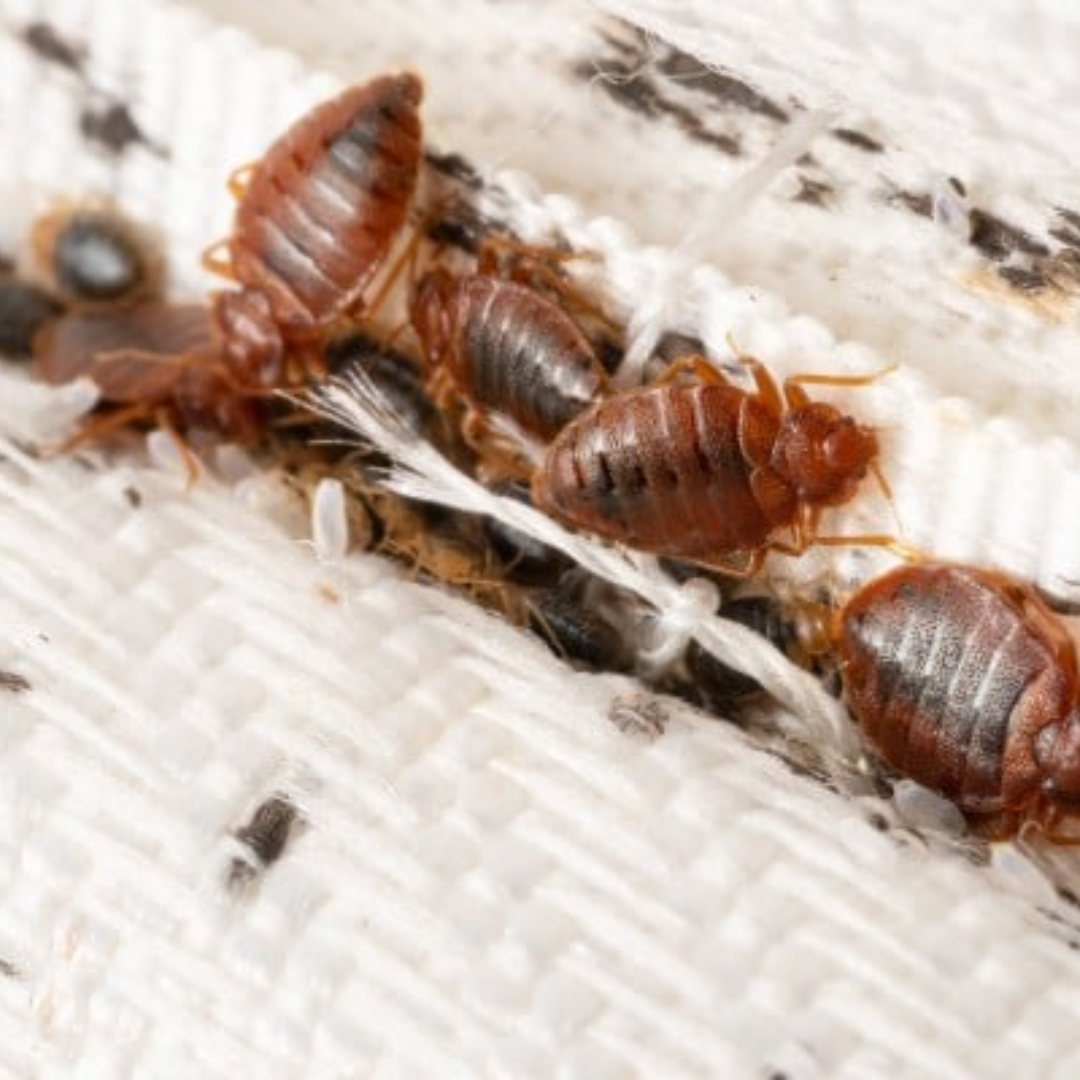Bed Bugs Places
Where Bed Bugs Hide
Bed bugs are notorious for being sneaky and elusive. They move quickly, often going unnoticed until the infestation has already escalated. A telltale sign of their presence is dark brown or reddish stains on bedsheets, which occur when they are accidentally crushed. In severe cases, dark spots—droppings left by the bugs—appear along the sides of the bed. Because bed bug infestations are challenging to control, professional pest control services are often necessary.
Common Hiding Places
Bed bugs tend to hide in small, concealed spaces, and they are adept at hitching rides on clothing, bags, and other personal items. While beds are the most common hiding spots, bed bugs can also hide in various other locations. Typical hiding places include:

- Mattress seams and tags
- Box springs and bed frames
- Headboards and bed rails
- Baseboards and behind wallpaper
- Couches, chairs, and cushions
- Carpets and curtains
- Wooden furniture (bed bugs are particularly attracted to wood)
Hotels and motels, where people frequently travel in and out, are particularly prone to bed bug infestations. Bed bugs may initially hide in headboards or wooden areas near the bed and then spread to other parts of the room. They are less likely to inhabit plastic or metal areas unless these areas offer sufficient protection and hiding spots.
How Bed Bugs Spread
Bed bugs don’t just stay in beds; they are experts at spreading to various areas over time. If an infestation remains untreated, bed bugs can migrate to nearby furniture, carpets, and even behind picture frames or electrical outlets. The infestation can extend beyond one room, reaching into other rooms and spreading to neighbors, hotels, schools, and even hospitals. For this reason, it's crucial to address the issue as soon as it is noticed.
Products Used To Elminate Bedbugs and other insects Permanently
Professional Pest Control Solutions
Addressing bed bug infestations requires thorough inspection and often professional intervention. Pest control specialists are equipped to detect hidden bed bugs and apply effective treatments that minimize the likelihood of re-infestation. Preventative measures, such as inspecting luggage after travel and reducing clutter in sleeping areas, can help control the spread of bed bugs.
Hiring a pest control service not only helps in eradicating the infestation but also prevents bed bugs from spreading to other areas. This proactive approach is essential for protecting your home, workplace, and community from the far-reaching impacts of bed bug infestations.
FQAs for Bedbugs Place
Bed bugs often hide in small, dark, and tight spaces close to where people sleep. Common hiding spots include mattress seams, bed frames, headboards, box springs, and within crevices of nearby furniture. They may also hide in cracks in walls, behind wallpaper, and even in electrical outlets.
Inspect the seams, folds, and tags of your mattress closely for small reddish-brown bugs, tiny white eggs, or dark spots that may indicate bed bug feces. You can also look along the edges of the box spring and the bed frame, as bed bugs tend to hide close to their food source.
In furniture, bed bugs often hide in cracks, joints, and cushions. Look for similar signs as on the mattress: dark stains, small eggs, and live bed bugs. They can hide in sofas, chairs, nightstands, and even under loose wallpaper or within picture frames near the bed.
Yes, bed bugs can hide in clothing, luggage, and personal belongings. They are commonly transported through these items after staying in an infested area. If you've traveled, inspect your bags and clothing carefully for signs of bed bugs before bringing them into your home.
To find bed bugs in the bedroom, check common hiding places like mattress seams, bed frames, nightstands, and baseboards. You may also find them in cracks or joints in wooden furniture and under carpets near the bed. Use a flashlight to help with your inspection in dark areas.
While it's less common, bed bugs can sometimes hide in electronics near sleeping areas, like alarm clocks, phones, or laptops. They prefer places close to their food source, so they might hide in any device you keep near the bed if space allows.








